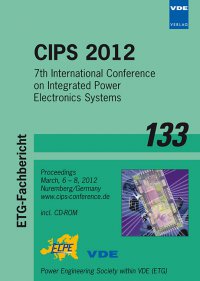SiC Device and Power Module Technologies for Environmentally Friendly Vehicles
Konferenz: CIPS 2012 - 7th International Conference on Integrated Power Electronics Systems
06.03.2012 - 08.03.2012 in Nuremberg, Germany
Tagungsband: CIPS 2012
Seiten: 6Sprache: EnglischTyp: PDF
Persönliche VDE-Mitglieder erhalten auf diesen Artikel 10% Rabatt
Autoren:
Hamada, Kimimori (Toyota Motor Corporation, 543, Kirigahora, Nishihirose-cho, Toyota, Aichi, 470-0309, Japan)
Inhalt:
Toyota Motor Corporation is developing several types of environmentally friendly vehicles, such as hybrid (HV), electric (EV), plug-in hybrid (PHV), and fuel-cell hybrid (FCHV) vehicles, as part of its measures to address environmental issues. Hybrid technology is the key technology used in all these environmentally friendly vehicles, and this technology uses a wide variety of power electronics components. For its 3rd generation HVs, Toyota developed a direct cooling structure for the intelligent power module (IPM), as well as a trench gate structure and thin wafer technology for Si insulated gate bipolar transistors (IGBTs). However, these developments are approaching the limits of loss performance of Si power semiconductors, and it will soon be difficult to further improve the overall performance of components that utilize control and module technology. For these reasons, SiC is attracting attention as a potential new breakthrough material for the development of the next generation of power electronic components. Compared to Si, SiC devices have the merits of size and loss reduction, and allow the adoption of simpler cooling structures. In contrast, various issues must be resolved before SiC devices can be practically adopted. These include securing sufficient reliability, developing high-temperature materials, reducing costs, and the like. This paper describes the current status and future issues of power electronics research and development in the Toyota group, focusing on SiC devices and power module technology.


